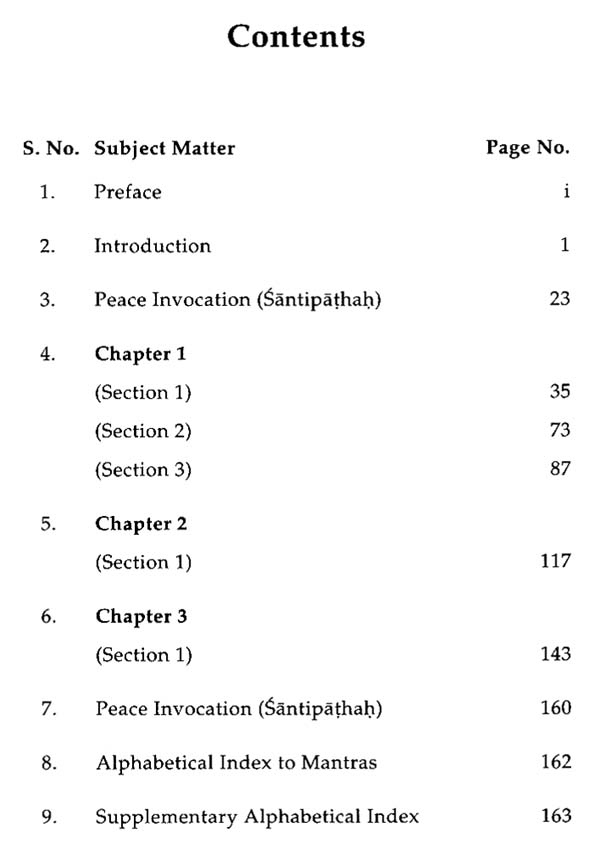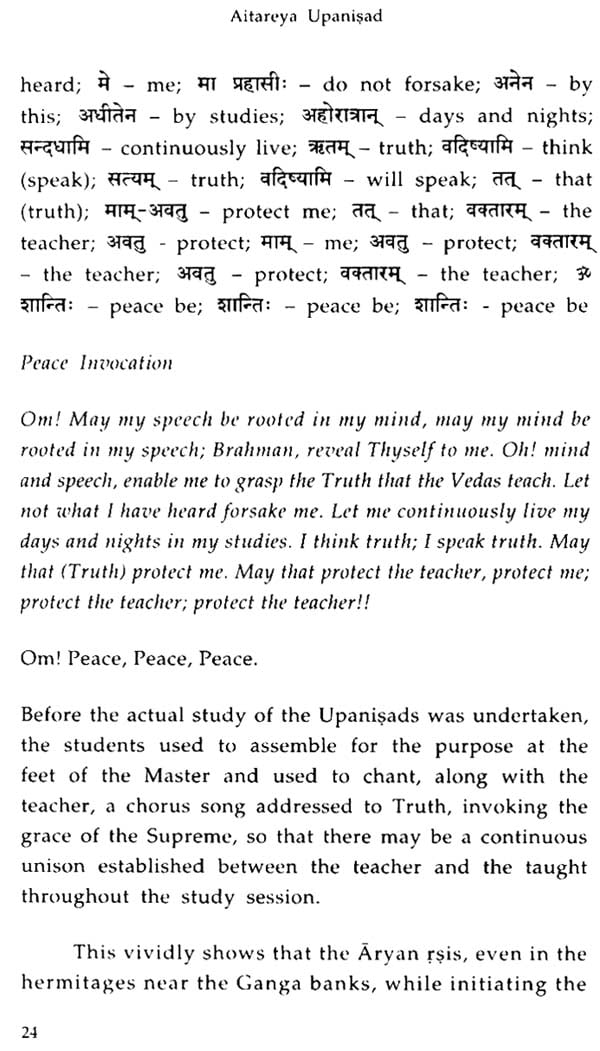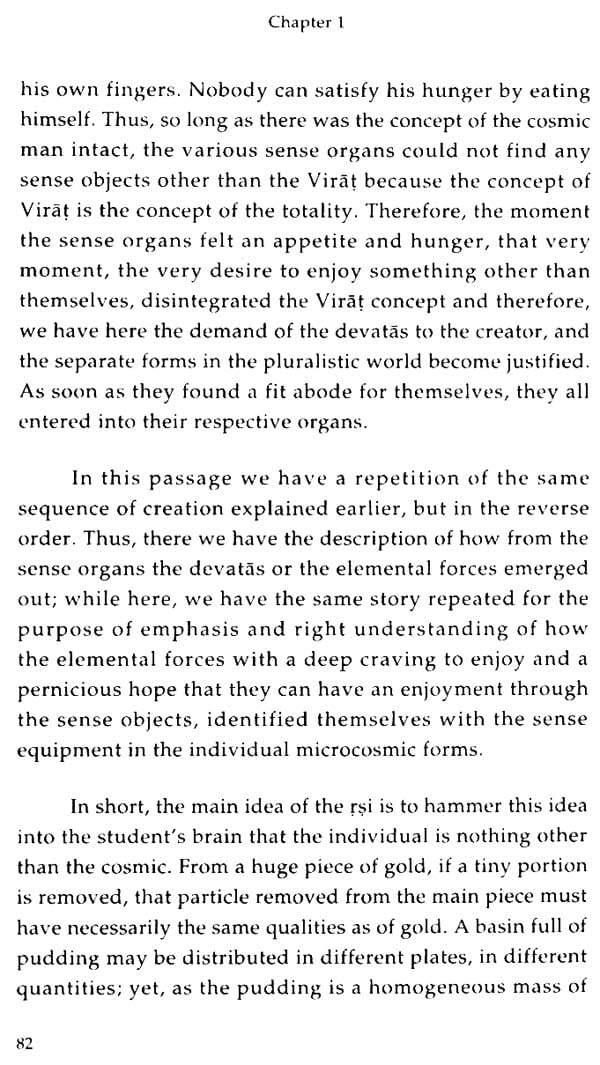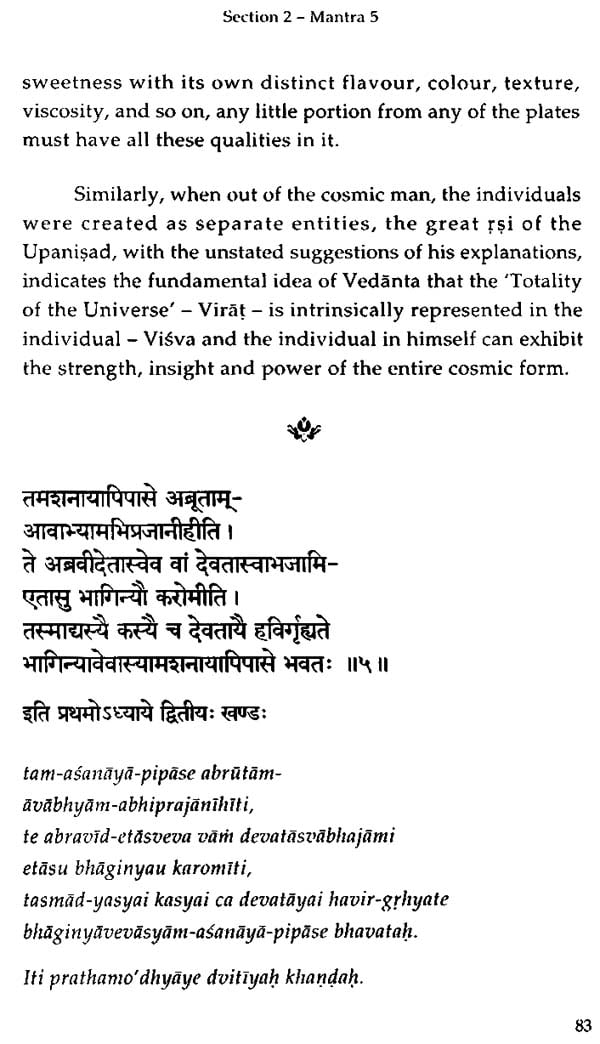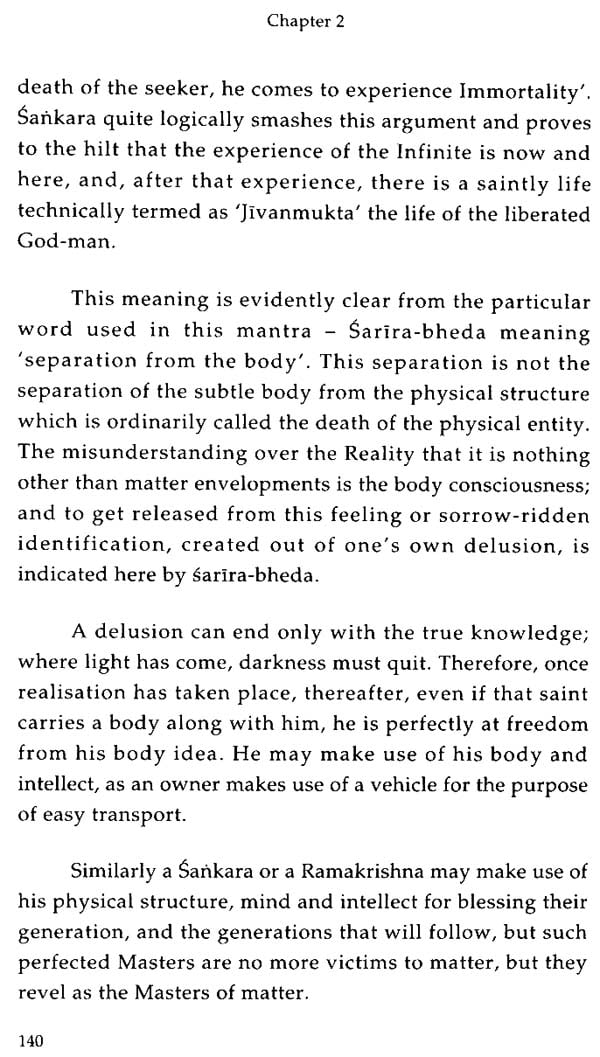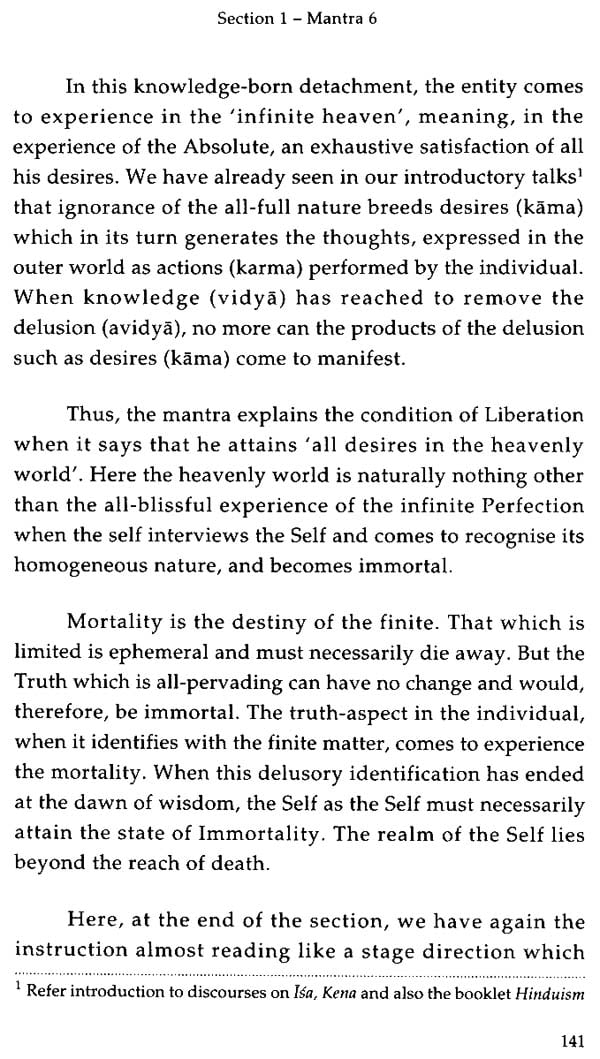
Aitareya Upanishad (Truth: Before and After Creation)
Book Specification
| Item Code: | NAU498 |
| Author: | Swami Chinmayananda Saraswati |
| Publisher: | CENTRAL CHINMAYA MISSION TRUST |
| Language: | English |
| Edition: | 2019 |
| ISBN: | 9788175976696 |
| Pages: | 163 |
| Cover: | PAPERBACK |
| Other Details | 8.50 X 5.50 inch |
| Weight | 170 gm |
Book Description
We all know that much of our ancient literature is now extinct. There were as many as 1180 oakhas of Vaidika literature. It is believed that each school had one Upanisad attached to it. Of about 280 Upanisads unearthed so far, 108 have been generally accepted as authentic texts. Out of these, eleven namely, isa, Kena, Katha, Prasna, Mundaka, Mandukya, Taittiriya, Aitareya, Chandogya, Brhadaranyaka and Svetasvatara, in that order, have been commented upon by the recent masterminds - Acaryas like Sri Sankara, Ramanuja and Madhvacarya, and are thus classified as major or principal Upanisads. Some do not accept commentary on the Svetatvatara-upanisad as that of ankara Bhagavatpada and thus acknowledge only ten as 'major' Upanisads.
The other Upanisads are considered as 'minor' - not on account of their contents, the depth of their thoughts, or the completeness of their exposition - but because no commentaries are available from the great Acaryas. The new initiates are generally prescribed these minor Upanisads only after a thorough study of the exhaustive commentaries (bhasyas) by the great Masters on five or six of the major Upanisads. Thus these became minor only with reference to the knowledge the students have already acquired as a result of their study of the major Upanisads and their reflection on these minor ones serves as an interesting revision of the knowledge already gathered.
All Upanisads - major or minor - enunciate the one goal which is Liberation and prescribe techniques for achieving that goal and are of equal importance and value. The classification, major or minor, is only to distinguish the well-known ones commented upon by Sarikaracarya.
The superhuman genius, Vedavyasa, for the first time, gathered Vaidika mantras, recorded them in written language and classified the entire wealth of Vaidika knowledge into four volumes in a harmonious rhythm, both in arrangement and classification of contents. Each Veda was further divided into three broad sections - mantras, brahmanas and aranyakas.
The mantra portion contains expressions of wonderment, joy and ecstasy at the visions of beauty in nature's exuberance. The rsis worshipped through the mantras the dignity of the mountains, the majesty of the sunrise, the beauty of the moon, the grandeur of the ocean and other phenomenal powers.
The second section, that is the brahmana portion, contains detailed and scientific description of methods of ritualistic performances and methods to invoke the 'Mighty Powers' behind nature to bless the devotees' desires into fulfilment. This section is further divided into two sub-sections - karma kanda and upasand kali:Ida. The grosser rituals, their rules, prescriptions for various yajlias and yagas form the first subsection, while comparatively subtler meditations, that are part and parcel of Vaidika ritualism, form the second subsection.
Through an ill-adjusted telescope or microscope, we know, any object will, of necessity, look blurred with its details lost in a general confusion of data. The more we focus the instrument, the clearer will become our appreciation and true evaluation of the perceived object. Similarly, our perception of the world outside is vague and our estimation of life false, when we bring into it a maladjusted mind-intellect equipment.
In this sense, if we compare the function of the mind and intellect with an ordinary telescope, we can say that the inner instrument in us has the mind for its 'object glass' and the intellect for its 'eyepiece'. When the adjustments in each of them are not correct, and when their relationship with each other is not properly maintained, the object viewed does not faithfully represent its true form. The more perfect their adjustments, the better the vision through them.
When an individual has lived his life in integration with his mind through one or the other, or even a combination of the four main paths in spiritual practices - bhakti, karma, jfiana, or hatha-yoga - that individual starts gaining a deeper and clearer vision of 'life as a whole'. He is no longer available for any vulgar enthusiasm to sweep him away from himself and make him a victim of some of the passing fancies of his generation. He independently evaluates life and with a tragic poignancy, comes to feel the dire imperfections that poison everything. He perceives the descent of a dark veil of tragic finitude upon the world around him making it ugly and insufferably detestable.
This does not mean that he turns himself cynical or that he becomes a victim of either a mental dejection or an intellectual pessimism. It only means that in his ruthless judgement he sees life - all the happenings without and within him, the lot of the people outside his home and the destiny of himself in his own family - in its stark nakedness bereft of all sentimentalities and aversions, just as a scientist observes the rising sun through his telescope.
The intellectual vision of the scientist is not clouded by the sentimental emotions of a poet or the deep discoveries of a mystic and his penetrating perception. The scientist observes a phenomenon and carefully notes down his observations of data. Similarly, when through right living and correct practices of devotion (upasana) a seeker gets fully integrated within, he comes to see things as they are, stripped naked of his attachments, vanities, preconceived mental dreams and their associated ideas.
Such a full grown `man-man' becomes a fully qualified student for the pursuit of Truth through the path of knowledge which Vedanta prescribes. Such an individual comes to see a purposeless hollowness in the business called 'life' as is available for him in the world.
**Contents and Sample Pages**
